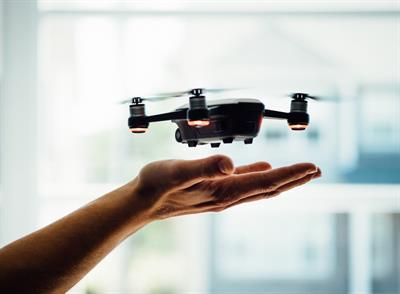.jpg?sfvrsn=1f3f9bf_0)
The construction industry hasn’t always been known for embracing innovation. In recent years, however, the sector has upped its adopting of new tools and systems that bring greater accuracy and efficiency to the field.
One example is the rise in popularity of scanning and analytics technologies. Using a combination of smart cameras, sensors, and Internet of Things (IoT) functionality, these devices are coded to observe and analyze activities throughout the jobsite in real-time and with greater speed and accuracy than the humans behind the controls.
These innovations aren't meant to replace workers; rather, they are being incorporated on job sites to augment skills and give project leaders and owners more visibility into their projects. For example:
- Laser scanning: Also known as high-definition surveying (HDS) or reality capture, these laser-emitting technologies scan environments or structures with pinpoint accuracy to create data points representing the scanned object (aka a point cloud). Using design or planning software, project stakeholders can use this point cloud as a basis for building information modeling (BIM) and site designs. These details scans can also serve as as-built records that inform future additions or renovations.
- Scanning apps: As discussed in part one of our construction tech series (link to the previous blog), many constructors are using mobile construction apps to keep teams informed and connected in real-time. On top of this, many of these apps can use their device’s cameras or sensors to record information (e.g., videos, audio, measurements, etc.) and share it with other users through a cloud-based project management system.In more sophisticated examples, scanning apps use augmented reality (AR) to add computer-generated perceptual information over the real-world environment. For instance, a worker can point their camera at a part of a building and see real-time project specs appear over their live image. They can also don AR smartglasses (e.g., Microsoft's HoloLens or Google Glasses) which layer computer-generated visuals over their surface to provide real-time information about their wearer's environment or current task.
- Wearables: If you've seen a Fitbit, iWatch, or "smart" headphones, then you've already been introduced to the idea of wearables. Similar to the AR smartglasses mentioned above,these devices can be worn or attached to clothing and collect a wide range of data via onboard sensors. Common examples include smart helmets, which monitor and report on the health and wellbeing of their wearers; radio-frequency identification (RFID) tags, which keep tabs on worker locations and perform automated functions (e.g., instant identification, access control, environmental controls, etc.); or smart bands, which are worn on an individual's arm to track desired vitals.

- Scanning drones: Unmanned aerial vehicles (aka UAVs or drones) are becoming a common sight on projects of every size. As the name suggests, these are remote-controlled aerial vehicles equipped with high-resolution cameras, light detection and ranging (LiDAR) tech, and image processing software to perform any number of tasks. Applications include advanced surveying, collecting data for 3D modeling, capturing high-res pictures and videos, conducting aerial building inspections, and other activities that require a clear and accurate bird’s eye view.
- Internet of Things (IoT): IoT isn't the name of a physical tool per se, but the term for what happens when scanning devices "speak" with each other within a connected digital network. Imagine, for example, linking equipment sensors together to conduct more effective fleet management, or using a network of sensors throughout a jobsite to steer automated equipment to the right locations and direct them to perform automated tasks. IoT also offers the opportunity to collect weather and activity data from an array of wearables to monitor jobsite health and safety or scan and track material handling.
More than meets the eye
You may not always spot them, but more and more scanning technologies are being trusted to keep an eye on modern job sites. Combined with project management software and IoT functionality, they offer a way to give workers a heads-up and provide all stakeholders with a bigger picture. Thank you for reading part two of our construction technology series. Read part one, Construction in the Cloud,and keep scanning our blogs for the next chapter.
Drone Photo by Dose Media on Unsplash